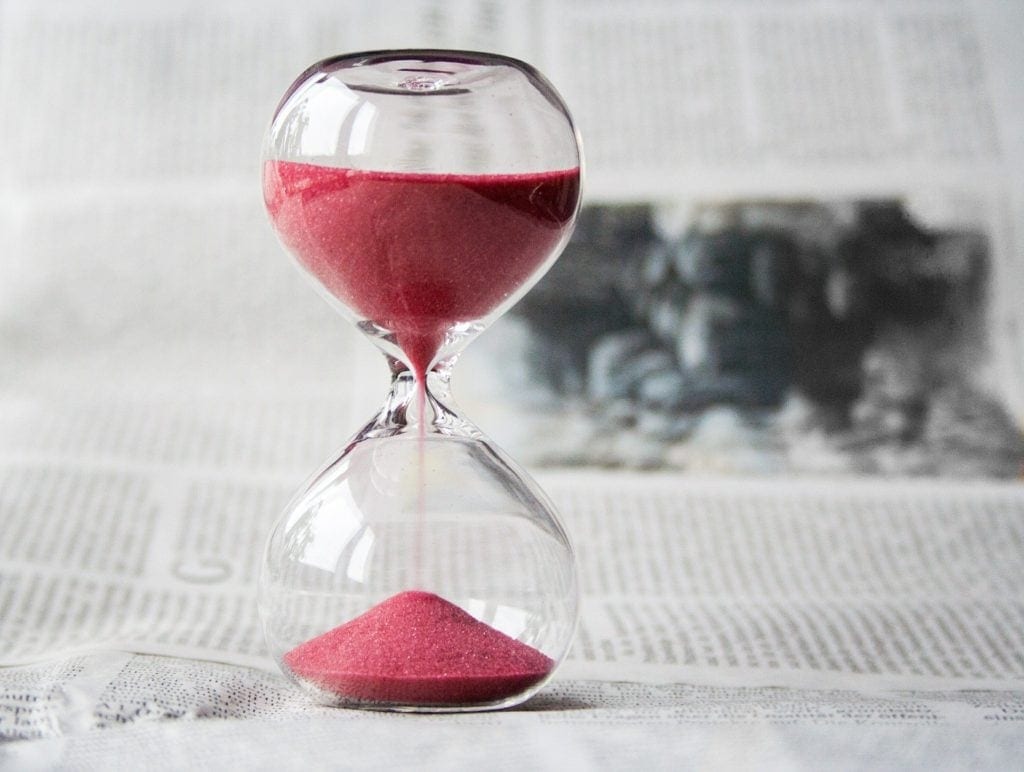11 | Goals and Luck


Goal Setting and Luck
December is my favorite time of year! Especially since I moved to Arizona and don’t really have to deal with snow and cold weather (sorry to my Eastern friends who love it – enjoy!).
Of course, I enjoy the holidays and the decorations and cookies, but in truth, one of my favorite parts of December is the nerdiest of all of my behaviors – it is my annual goal setting time!
Every single December, for at least the last 20 years, maybe more, I do my version of new year’s resolutions – which generally results in about an 8 sheet excel spreadsheet. What, doesn’t everyone do that?
Don’t laugh until you hear me out. People are forever telling me, “I can’t believe you do that” and honestly, I think, I can’t believe you don’t. I honestly don’t know how the rest of you manage your lives, how do you know what you need to do to get where you want to go?
My annual plan includes both work and personal, always has. We spend so much time at work, it would be weird to leave it off. Plus, I have always tried to make it a point to enjoy my work so planning for a good year is fun.
I am going to share my process here with you – not because I think everyone should do it my way, but because my way might give you some ideas for what might be helpful for you. And since 2020 was such an, let’s just call it “interesting” year, planning for 2021 seems more exciting and more essential than most.
Every year I start with a review of my goals and what I accomplished for the previous year – and sometimes previous years. I look over what I wanted to accomplish and try to celebrate anything I was able to check off, and then think about the reasons why I might now have been successful in other areas. I can tell you; I have never even come close to accomplishing everything, but I can also tell you that I have always made progress. Somewhere!
Okay, so what exactly am I reviewing and how to do I go about it? It all stems from a book that I read when I was 23 years old – and a brand-new sales manager at the Holiday Inn Arlington at Ballston. How to Get Control of Your Time and Your Life – by Alan Lakein. The book was introduced at a sales meeting by my then general manager, Mickey Rowley and he made us read and do – which is really important. I have often wanted to create a class around the book – but they have never updated it so in the book, if you were a woman, your goals focused on being a better house cleaner and wife – and there are a few references to 8 track tapes! But the principals were timeless.
The very first step is to write your obituary. Seriously weird, I know. But important. What you are trying to do is to force yourself to think about what you want your life to have meant. Stephen Covey did something like too – the concept is to begin with the end in mind and work backwards.
For example, it is really important to me that before I depart this earth, I want to have seen most of it. This is a big world, and I want to have explored it. So, as you can imagine, in my annual goals, travel shows up a lot. So, in this obit, be specific, and dare to dream. You have one life, make it a big one. I think at 22, I wrote that I was the owner of a company (done!), that I had been a triathlete (done!) and you get the idea. Big, broad life goals.
The next step is to look out five years and see where you want to be. Ideally those five-year goals ought to have something to do with your obituary. If not, you need to rethink one or the other. For example, if I had no travel on my five-year goal – I would think about why. Maybe seeing the world wasn’t quite as important as I thought it was if I didn’t want to make time for it in the next five years. So, once I evaluated that, I might either take it out of my obit or add it to my plan, depending on what I determined mattered to me.
For my five-year goals, I will typically choose 7 or 8 things. Tangible, still pretty big things. For example, I might list a couple of places I want to travel (because that did stay in my obit!). In my case, this year my five-year plan has two places on it – Romania and an African safari. And in the last ten or so years, I have added financial goals in two forms – income and savings/retirement goals. Very specific numbers. I usually have some sort of learning goal – a language, coding, accounting – something like that. Currently on mine is mastering unstructured data. Seriously, I told you from the start I was a nerd, surely that isn’t a surprise.
Of course, I have some personal goals I won’t share here – but trust me, health and weight show up pretty consistently, along with personal relationships.
Once I have my five list of goals done, I prioritize them. If I only get one thing done, what would that be? That gets an A1. Then A2, A3, B1, etc. That is an interesting part of the entire exercise, ranking. I start out thinking, but I want to do all of these things! And then ranking forces you to really think about what actually matters to you vs what you THINK should matter to you. The longer I have done this, the easier this becomes but that took several years.
Next, I move on to my one-year goals. By the end of 2021, what do I want to accomplish? Sometimes this list is only 3 or 4 things, other times it is 7 or 8. Again, it is really important to the entire process that your one-year goals somehow contribute to your five-year goals, which somehow are tied to your lifetime goals (or your obit).
At this point in my life, my goals generally focus around some pretty basic themes. Health, wealth, travel, relationships, learning – and in general how I will spend my time. Now, when I say goals – I of course mean SMART goals. I don’t say, I want to be healthy. Instead, I write, I want to weigh X, have a resting heartrate of X, complete a half marathon, etc. I want to save X amount of money, I want to buy a new car, you get the idea. Very specific, very measurable. No question at the end of the year whether or not you were successful, either yes or no. That is REALLY important! My goal every year is of course to be happy – but I have learned, in order to be happy, I need some stuff to be in place – I need to be healthy, have some peace of mind because I can pay my bills, etc. So, I translate what happiness means to me into tangible steps.
At this point, for me, it becomes the most fun. And this is also where my spreadsheet comes into play.
On the first page of my spreadsheet, I have my life goals, my five-year goas and my very specific one-year goals.
I then create quarterly goals. So, for example, if my year end goal is to go on a safari, my quarterly goals will build up to it. Determine a specific destination in Q1. Book travel in Q2. Map out specific itinerary in Q3. Travel in Q4. Now, sometimes, my research in Q1 tells me, the best time to travel is in Q1 – so that goal might be pushed to next year. Or everything else gets modified to make it happen this year – allow for changes. But I am mapping everything out – including the money. If my goal is to save $10k and this trip is going to cost $10k, how am I going to come up with $20k? One thing forces planning and adjustments in other areas.
Now at each step, I am again having to prioritize and modify. But every decision, and every modification is based on my much larger goals. I have learned a couple of things about myself over the years. I am not really risk adverse. Peace of mind because I have a settled life is not a long-term priority for me. For some people, it is essential, and you should learn that about yourself. But for some, like me, excitement and change are more critical for me to be happy, than stability. So honestly, my goals and priorities reflect that.
For example, for me, if I have to choose between adding $10k to my retirement or $10k for a safari, I am going on the safari. I will work a few more years longer, that is okay with me. For others, that makes no sense. You be you.
Okay, so now we are down to quarterly, very specific goals with A1, A2 next to all of them.
My last step is to make a 13-week plan. So, on my spreadsheet, I make a Q1 sheet, Q2 etc. and put my goals at the top. Then for Q1, break it down to weekly goals which turn into my daily to do list. And for every step, I do the same A1, A2 thing.
Let me give you a very tangible example as a salesperson what an annual, quarterly, weekly and daily goal might look like.
Annual goal – I want to grow my sales by 10% this year. Turn that into an actual number – for simplicity sake, let’s say it is $100,000 more in sales. Quarterly, to make it easy, let’s call it $25k in additional revenue. Now, depending on how you make sales, you could divide that by 13 (13 weeks per quarter) or in my case, I have an average class sales price of $395 so I break it down into the number of classes I need to sell – 64 classes (rounded up). That is 22 classes a month (in my case this is 22 individual students).
Then, there is a little more math involved. I know all of my conversion formulas (you should too!). So, in order for me to close 22 students, I need to 88 “opportunities”. For me, opportunities are students who have done something – signed up for my email list AND watched a video or asked for a demo. So, to get 88 opportunities, I need to reach out to 900 people. Each month. Here is the specific math:
Leads per month – 880
Conversion rate – 10%
88 opportunities
Conversion rate – 20%
22 closed at a rate of $395 = $8690, times 3 – $26,000.
So, in order for me to reach my goal of $25k extra each quarter, or $100k more this year, I need to figure out how to get in front of an extra 880 people a month.
Once I have figured out the goal, then I break it down into activities. I think about what has driven leads before and I make a list.
Blog posts
Podcasts
LinkedIn outreach
Speaking engagements
Lead nurturing
Newsletter updates
Past customer referrals
Video sales emails
And then on my spreadsheet, I list out exactly what I am going to do that quarter to reach those numbers. Again, I am very specific. X blog posts a month, X LinkedIn contacts added per week, etc.
I prioritize and plan those activities as well. A1, A2. Etc. And then I plug them into my daily to do list. I decide how many blog posts I need to do, and I map them out. I try to develop some routines for my highest producing activities. And then I also try to think about my lifestyle and incorporate timing.
What I mean by that is currently, I am an early riser – I mean 5amish. Crazy I know. So, on Saturday mornings, at 5am, I map out my next week. On Monday mornings at 5am, I write drafts of blog posts. On Friday afternoons, I am generally pretty wiped out, so I plan to do nothing after 3pm. I decide on Friday at 3pm what I feel like doing – go to a movie? Binge watch tv? Meet up with some friends on Zoom for happy hour? It is really important to learn yourself and your natural habits and try to incorporate them.
I like to exercise around 10am. I work for myself, so this is possible, with some planning. Not every day – on Mondays I usually need to teach classes, so I have to adjust that.
Here is my big secret though – and you will REALLY think I am crazy when I share this. Those activities? I actually try to break them down into teeny, 10-minute steps! Seriously.
For example, in order to write a blog post, I might list out (and schedule) the following steps:
- Review buyer persona for blog post ideas, settle on one
- Write an outline for the blog post
- Research any key points for blog
- Write a rough draft
- Edit draft
- Make it more interesting
- Add to website
- Write snip.ly links to share it
- Add to posting calendar
Except for the write a rough draft – all of those other steps take me no more than 10 minutes. And honestly, even writing the rough draft doesn’t take me that long because I just do a stream of consciousness thing – I just write whatever comes into my head. I know later I am going to edit it so that allows me to write more freely, and quickly.
Why 10 minutes? I learned that in the original book. Most people will make a do list with things like, write the great American novel, clean my house, Christmas shop. They list out things that require hours. And nobody ever has hours. But ten minutes? You have a lot of ten minutes. And you can either waste those 10 minutes on Facebook (and I do sometimes!) or, if you have a ready-made list of ten-minute activities, you can check them off. You get stuff done, AND you get to feel so very accomplished by checking things off.
It is very funny because even though I KNOW this ten-minute thing works better than anything else, sometimes – for months at a time – I skip it. I am rushed so I just write the bigger picture things down. And every single time, I am less successful in the end. Every. Single. Time. 10 minutes works. I know it. I wish I could say because I know it I do it all the time, but I still don’t. But, eventually, I always get back to it.
Over the years, I have tried various tools to help me stay organized on the daily basis. Trust me, all of this planning is a fun exercise, but if you don’t keep it front of mind all year, nothing gets accomplished. If you put some systems in place to keep it front of mind, you stand a much better chance of accomplishing what you want.
The tool that I use currently to turn my spreadsheet into daily lists with my 10-minute activities is Todoist. I used to use Trello and todoist both, but I am so happy that Todoist enable a Kanban feature this year (which is basically a Trello card view) because that is really how I like to see things so now I only have to use one main tool (other than excel!).
In Todoist I take my big annual goals and break them into many subtasks and put dates and priorities next to them. Then every day, when I wake up, there is a to do list that is waiting for me, organized by priority. No more thinking required! And it is integrated with my Google calendar – so all day long as I am checking email, there is my list, staring at me.
Of course, stuff happens. Emergencies AND opportunities arise. So, I add to Todoist as I need to. I try, just once a month, to do a big update – just look over each larger goal and see what I need to adjust.
How much time does all of this take me? Once a year, a good amount. I probably spend 3 or 4 hours for 3 or days in December reviewing the past year, updating my lifetime, 5 year and one-year goals. Obviously, the longer you do this, the more efficient you become but I still invest a few hours. Once a month I spend at least two hours updating. And then once a week, an hour fine tuning.
Do I accomplish everything on my list? Not ever, not even one year! But truthfully, I am astounded at how much I am usually able to accomplish. And I learn a lot about myself in the process. If there is something that never gets done, I eventually have to be honest with myself and say, hmmm, maybe that isn’t really as important to me as I want to pretend, because I NEVER make time for it. So, either I need to accept it, or try a different approach.
And then of course, there are years like 2020. My original goal list that I completed in December of 2019 is probably the worst I have ever done in terms of accomplishments. All those growth plans, all that travel. Ha! I am reminded of John Lennon saying the life is what happens to you while you are busy making other plans.
However, my business has so far survived 2020 precisely because of my master plan. I have been forced to pivot, but I have done so with the same approaches I always take – careful planning, revised goal setting and daily intentional actions. I will say, the one change that 2020 has forced on me is a little grace. I have allowed myself a few more – okay maybe dozens more – Friday afternoons this year than ever before. I have pushed myself a lot less in 2020 because it has been a trying and exhausting year for all sorts of reasons far beyond my control. But my list and my updates have also provided me some comfort and some small feeling of control, in an otherwise chaotic and overwhelming environment.
My final note on goal setting is to always be grateful. No matter how much your try to plan, life does happen, and disasters befall all of us. But even in the absolute darkest times, try to find something, even the smallest things to be happy about. I try to do this when I first wake up or just as I am falling asleep – I spend a few minutes thinking about how lucky I am. Don’t think for a minute that you can control everything – luck matters. My old boss used to tell me all the time, the harder I work, I luckier I get, and I know that to be true. And the more I remind myself to be grateful for the good – and the luck, the healthier my state of mind. Sometimes this seems an impossible task, I get it, but if you search, you can usually find something.
I hope you have found this somewhat helpful. My approach might not work for everyone, but I am certain that elements of it would help anyone move further along in their life.
Holly
Leave a Replay
About Hospitality Sales Podcast
Loren Gray with Hospitality Digital Marketing convinced me to create a biweekly podcast – “It’ll be easy” he said. Not so much. But really rewarding. I ended up interviewing some fantastic people in between my own sales podcast rants. I hope you enjoy!








Responses